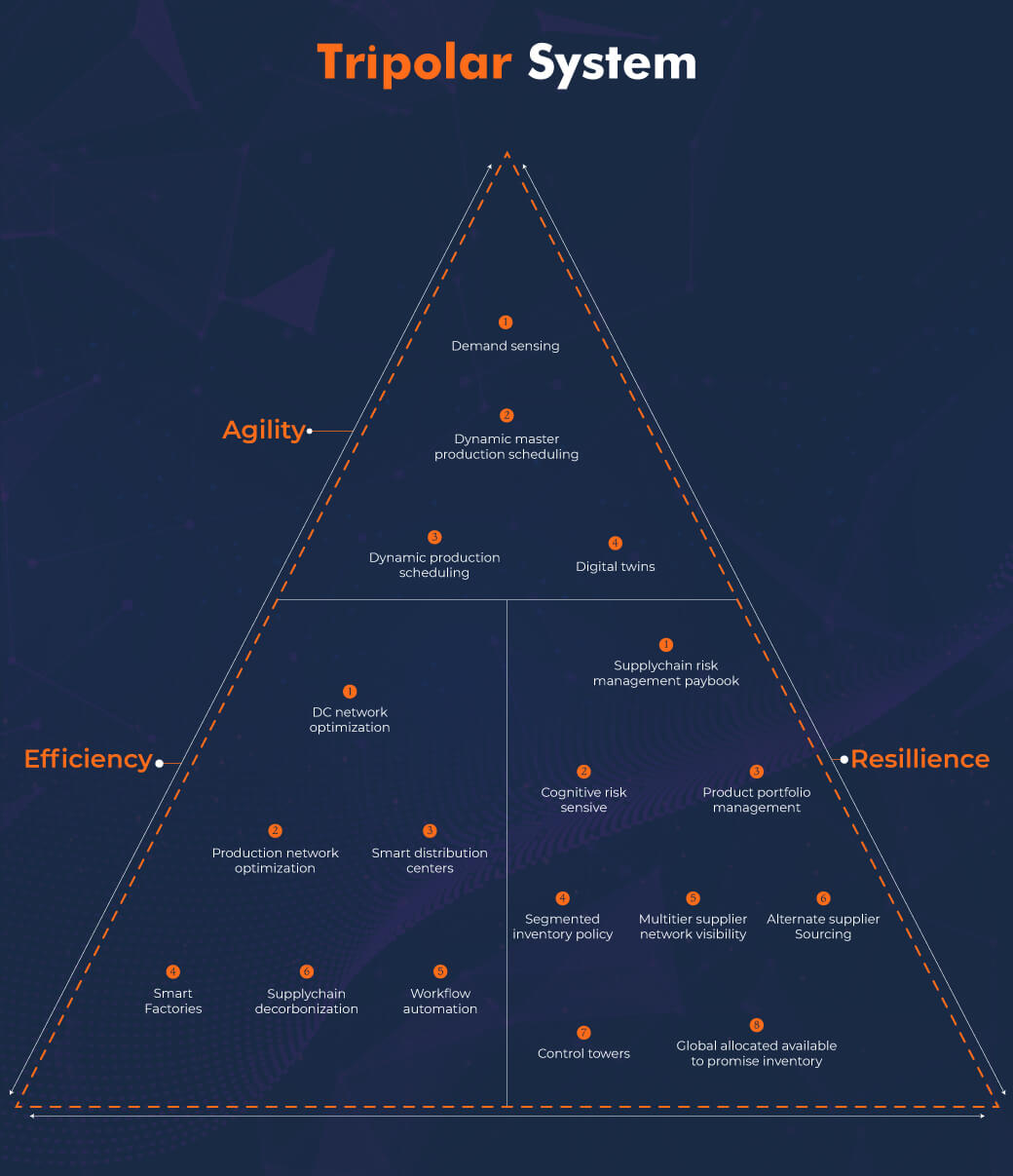We are now in the post-pandemic era, or a strong comeback after a lot of survival. The pandemic has disrupted many sectors and has shaken the entire business sector. It is not so easy to reborn in a land that has undergone a great revolution, but we can.
One of the immense challenges confronting businesses today is the need to respond quickly to altering customer requirements. Customers are becoming more choosy, customized products, expecting prompt order fulfillment, and seamless earnings. If we fail to meet these requirements then it can lead to mislaid sales, disappointed customers, and eventually a damaged brand reputation.
As businesses continue to face ever-increasing change, supply chain agility has become a critical factor for survival. The challenges facing the modern supply chain are daunting, from varying customer needs to unpredictable supply chain disruptions. But today's improved supply chain agility wipes out these woes.
An in-depth study of supply chain agility never has to be boring. Because we make you more engaged and lead you in the right direction - it can be downright fun! Let's start.
What is Supply Chain Agility?
Supply chain agility is an organization's ability to respond speedily and efficiently to changes in the supply chain. Or else how a supply chain can quickly react to changes in the market and customer demand. It also refers to the ability to anticipate and resist unexpected and catastrophic events as its forte.
This ideology means being fast, flexible, and ready to tackle whatever obstacles come your way. But achieving supply chain agility is not easy. It requires careful planning, better processes, and a little bit of creativity.
To build an agile supply chain, you must have to:
- Efficiently optimize and improve logistics operations.
- Easily implement the latest technology and automation.
- Gain visibility into operations and access real-time data.
The Benefits of Supply Chain Agility:
Businesses that can directly adopt the best practices of supply chain agility management to compete in the market over others to gain significant potential benefits. From its name itself, we can understand what agile supply chain means. Ability to adapt very quickly, ability to change fast as circumstances change, be it a sudden spike in demand or a disruption in the supply chain. Here are the benefits a company can gain by embracing an agile supply chain:
- Increase responsiveness to customer needs and reduce lead times.
- Increase supply chain visibility and reduce the risk of disorders.
- Improve collaboration with suppliers and partners.
- Optimize inventory levels and reduce carrying costs.
- Improves efficiency and lowers trash throughout the supply chain.
What Makes a Supply Chain More Agile?
The focus on agility will alter based on a business's overall strategy. And, The design of the supply chain to sustain that strategy. Anyway, the agility can be made in four places. Each of these areas involves new capabilities and, additionally importantly. They require a new version of the role of agility in making competitive benefits.
- Collaborative relationships
- Demand sensing
- Information integration
- Process integration
1. Collaborative relationships
Supply chain managers excel at collaborating with their key supply chain partners to respond to these opportunities in a planned manner. They collaborate with key customers, exchange market information, and align demand forecasts and product flows. They excel in this area and become data hubs, receiving data and observations from numerous sources to identify possibilities and dangers.
2. Demand sensing
The ability to comprehend and respond to modifications in demand is a good start. In an agile supply chain, managers track metrics that have a moderate number of days between sensing the demand for a new product and bringing it to market. The overall number of products introduced is based on proactive sensing of new customer preferences.
3. Information integration
Artificial intelligence is driving the digitalization of supply chains, leveraging more information on assets. Organizations trying to increase their agility often falter due to the inability to easily and quickly share information across the organization. Agile supply chains observe the promptness of details and the percentage of data they have in real-time or better.
4. Process integration
Process cycle times traditionally measured in months can be accomplished in weeks. Weekly processes become daily processes. The boundaries between planning and execution will blur. Agile supply chain corps smash down traditional functional borders and concentrate on optimizing end-to-end operations. The capability to respond quickly can guide to more significant vertical integration and immediate control at a higher percentage of nodes throughout the end-to-end supply chain.
A Tripolar Strategy System
The need for agility to achieve supply chain excellence is increasing supply chain managers' focus on resilience and efficiency. The equation for optimizing supply chain design has become more complex. Supply chain executives have found a new balance that properly balances these three imperatives.
Adding agility to the supply chain will require investment in building new capabilities. Fortunately, many of these new capabilities are interconnected and will move the needle in the other two dimensions.
The three dimensions are:
- Efficiency-focused initiatives
- Agility-focused initiatives
- Resilience-focused initiatives

6 Best Strategies: How to Improve Supply Chain Agility
This is where the answers are hidden and let's delve into the answer hunt together to find the solution. Six Proven strategies and best practices to improve Supply chain agility.
- Embrace digitalization and automation
- Streamline processes and eliminate inefficiency
- Improve visibility and transparency
- Foster collaboration and communication
- Emphasize continues improvement and innovation
- Develop a flexible and resilient supply chain
1. Embrace digitalization and automation
It can be easy for errors to slip through the cracks, which are the problems faced by a workforce trying to keep up with the latest demand. Digitization and automation are two factors that help to overcome these. By streamlining and automating supply chain processes, businesses can improve efficiency and reduce the likelihood of errors.
2. Streamline processes and eliminate inefficiency
By eliminating unnecessary waste from a supply chain and streamlining the process, a company can achieve a more efficient, improved, and budget-friendly supply chain. This process is a game changer in the game of improving supply chain agility. The backbone principle behind this is value, value stream, flow, pull, and completeness – these provide a framework for achieving this goal.
3. Improve visibility and transparency
We live in a competitive business market world where organizations are in a race to win their customers' needs and money. Supply chain visibility and transparency are more critical than ever. Organizations must have complete visibility into their supply chain operations to remain competitive and responsive to customer needs. One way to increase visibility and transparency is through the use of data analytics.
4. Foster collaboration and communication
Effective collaboration and communication are two key ethical factors for success in today's complex supply chain. By collaboratively sharing information, supply chain partners can improve efficiency, reduce costs and increase agility. Procedures to improve collaboration and communication include assembling cross-functional teams, sharing data and analytics, and using technology to promote communication.
5. Emphasize continues improvement and innovation
Continuous improvement of processes and operations is essential for businesses to succeed in the race for a successful business. By adopting a process of continuous improvement, companies can remain agile and responsive to changing market conditions, and able to withstand major changes and crises.
6. Develop a Flexible and Resilient Supply Chain
To improve your supply chain agility and reduce supply chain disruption efficiently, then, it is imperative to develop flexibility and adaptability. Which indicates anticipating and responding to market changes, as well as preparing for unexpected disruptions. A major aspect of this strategy is to develop a risk management plan that considers potential threats to your supply chain and how to mitigate them.
Wrapping Up
Greater transparency in the supply chain
So here's the point, by implementing these strategies and best practices to improve supply chain agility, your business can stay one step ahead and survive and thrive in today's changing business environment. Being supply chain agile means that your business can quickly adapt and survive the changes in an ever-changing world.
It aims to enable businesses to optimize their supply chain operations, reduce costs, increase customer satisfaction, and gain a competitive advantage in the market. Remember, supply chain agility is not just a hot news topic in today's talking town, but a critical factor for business success in today's dynamic marketplace.
 Translate
Translate


















Author Bio
Yokesh Sankar
CO-Founder
Yokesh Sankar is the co-founder and chief operating officer of Sparkout Tech. He believes in changing people's lives for the better and developing the skills they need for success, and that the software industry has endless possibilities to streamline virtually any industry you can imagine. In addition, he is also an advocate for the adoption of blockchain technology, helping businesses of all sizes to realize their visions through this revolutionary technology. He will be sharing everything he has learned over the years working in the industry, and he hopes to open out as much knowledge about the software industry as he can.